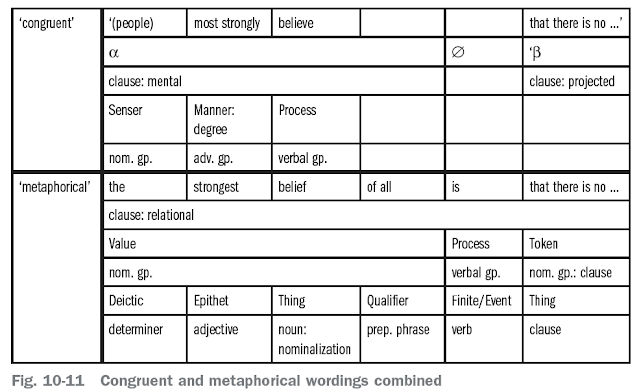Halliday & Matthiessen (2014: 705):
In addition to metaphors based on ideational projection, there are other kinds of metaphor of mood as well. One prominent type involves a shift in the realisational domain of commands from ‘imperative’ to ‘indicative’ clauses. The ‘indicative’ clause can be either ‘declarative’ or ‘interrogative’; for example:
[iii] proposal ↘ modulated indicative
(1) declarative
||| Yes, well, if you apply that criterion, || then surely you must start to rearrange your estimates of Lawrence’s novels, surely. |||
||| Perhaps you should tell me about your current project. |||
||| You just don’t think about it; || you shouldn’t. |||
||| Well look, honestly, Mrs Finney, my suggestion to you would be [[[ that if you want to read English honours || you should spend a year in solid preparation for it || and then reapply]]] . |||
||| I think || you should talk to David Hawker, || whose committee, <<I think,>> put this in train. |||
(2) interrogative
||| Oh can you get some napkins? |||
||| Can you name a moment, or an image [[[ that you can point to || and say || this is [[ when you decided || that you were going to write The Greenlanders]] ]]] ? |||
||| Would you like to take the comfortable chair? |||
||| Could you tell us about a poem [[ which lives up to this ideal of yours]] in whatever period? |||










